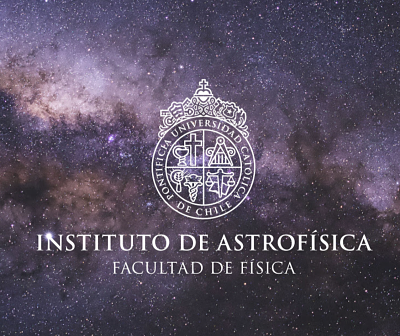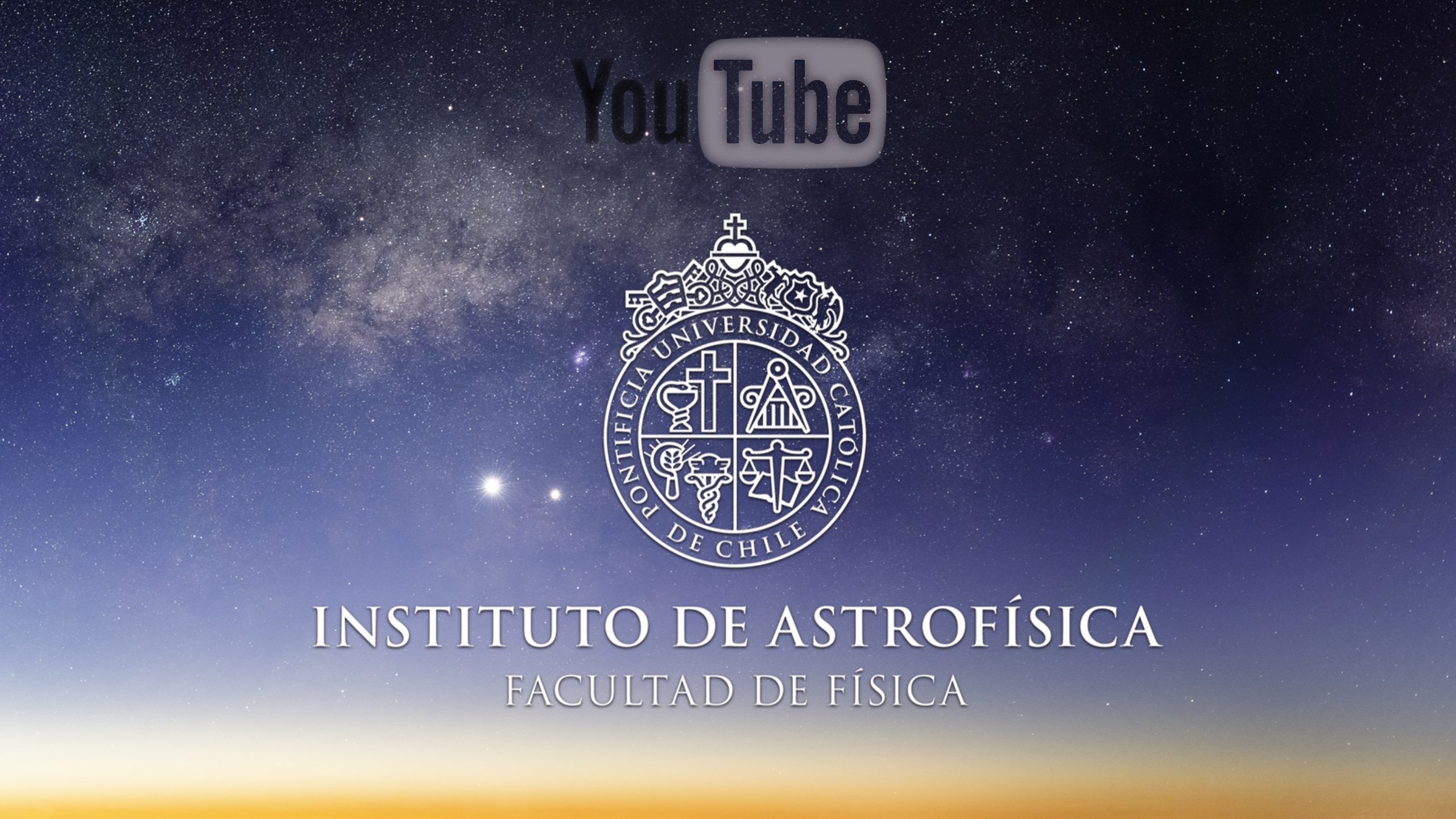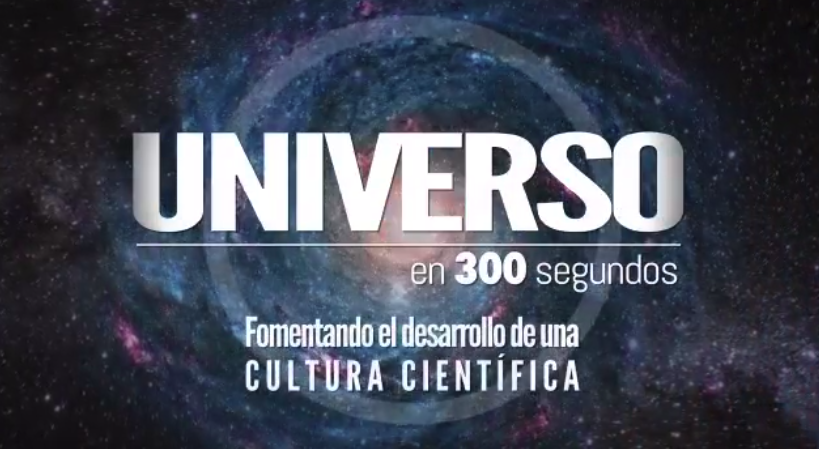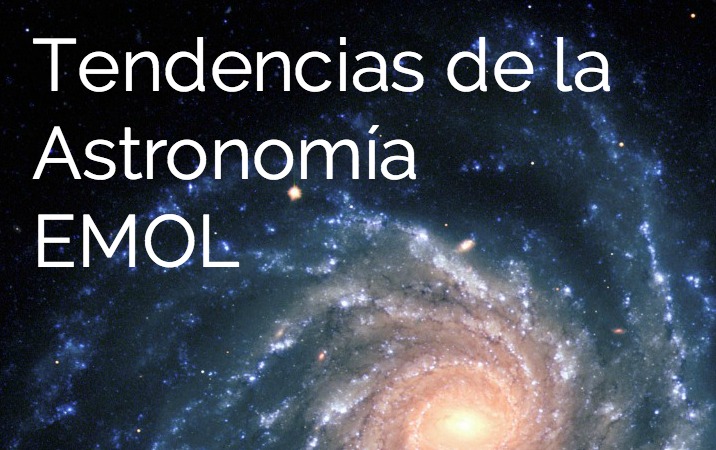14 June 2017
Possible FONDECYT Fellowship Sponsors
Felipe Barrientos
Research lines: Galaxy clusters and their evolution through imaging, strong lensing, and SZ signatures. Machine learning techniques to exploit large imaging surveys.
Current projects are:
-
Imaging surveys like VST-ATLAS and the Chilean U-band extension (UVAS), this is aimed to identify galaxy clusters, QSOs, and galaxy morphology.
-
Lyman Alpha Galaxies in the Era of Reionization (LAGER). This program uses a custom narrow-band filter to select emission-line galaxies at z~7 to constrain the reionization process. We have already about 200 candidates in 4 fields (see lagersurvey.org)
-
Arc-tomography of galaxy halos. IFU observations of bright strong lensing arcs allow us to study the gaseous halos of galaxies in the path to the arc through their absorption signature.
-
Red-Sequence Cluster Surveys. MOONS Extragalactic Survey.
A list of articles is presented in http://www.astro.puc.cl/~barrien/personal/Felipes_page.html
Franz Bauer
Research lines: Multi-wavelength studies of AGN structure, distant star-forming galaxies, and extragalactic transients
Looking to sponsor postdocs who can be incorporated into the following projects:
-
Optically selected AGN and transients - Bauer is a member of the LSST AGN, TVS, and DESC Science Collaborations (SCs) and is involved in much of the preparatory work required to identify and study the AGNs that will be probed by LSST. At the moment the AGN SC is focusing on the Deep Drilling fields to generate effective truth tables to use with the full sky survey. More generally, Bauer is involved in the development of the ALERCE broker for ZTF, HAT-PI, LSST, etc., and spectroscopic follow-up via large surveys with 4MOST (PI of ChANGES) and SOXS. Sponsored postdocs would take part in preparatory work (optimization of search algorithms, assembly of these samples, optimization of follow-up, etc), as well as help with the commissioning data and follow-up campaigns.
-
VLT/MOONS Extragalactic Survey - PUC is a member of the instrument team and PUC-MOONS team members (incl. Bauer, Treister, Barrientos, Padilla, Vanzi) are taking part in an SDSS-like guaranteed-time sky survey to acquire 0.6-1.8um spectra for >200,000 galaxies and AGN at z~1.5. PUC will be involved in the planning, observing, reduction, and analysis of the spectra, and lead AGN and z>6 galaxy characterization programs. Sponsored postdocs would take part in the assembly of these samples (including new observations with Chilean facilities) and early commissioning campaigns.
-
ALMA studies of AGNs and SMGs - Bauer is PI of ongoing programs to observe dusty star-forming galaxies in the Frontier Fields and CDF-S survey regions, as well as co-I in several other surveys and individual studies (ASPECS, ACLS, …). Sponsored postdocs with interferometry expertise would work on proprietary and archival data to place useful constraints on distant obscured star formation and black hole accretion.
-
X-ray studies of AGNs and extragalactic transients - Sponsored postdocs would exploit archive and new X-ray observations to test and probe AGN, TDEs, SNe, ULXs, and other objects.
Márcio Catelan
Main research lines: stellar structure and evolution; pulsating stars; variable stars and their use as tracers of the structure, formation, and evolution of the Milky Way and other nearby galaxies; extraction, classification, and characterization of variable stars and transient events in optical and near-infrared time-series surveys; star clusters. A list of publications can be found at https://tinyurl.com/y5fccxdo. Currently involved in a variety of surveys, including Catalina, VVV(X), DECAT, and Rubin/LSST. Active member of the ALeRCE broker collaboration (http://alerce.science/), which is currently processing data from ZTF, ATLAS, and DECAT, and will also process the Rubin/LSST data stream in the near future.
Postdoctoral candidates with an interest in exploring the synergies among these and other ongoing and future surveys, such as Gaia, TESS, and PLATO, as well as follow-up spectroscopy with facilities including 4MOST, MOONS, and others, are especially encouraged to apply. E-mail address for questions: mcatelan@astro.puc.cl or marcatelan@gmail.com.
Julio Chanamé
Research lines: stellar dynamics of galaxies and star clusters; stellar structure and evolution; stellar rotation; Milky Way and Local Group stellar populations; wide binaries
Looking for postdocs who could join and take leading roles on any of the following projects:
-
Dynamical modeling (Jeans and discrete Schwarzchild) of the resolved stellar populations of nearby galaxies and star clusters (luminous and dark mass content and distribution, central black holes). Projects within the HSTPROMO collaboration.
-
Search and characterization of debris from the Magellanic Clouds using deep optical and near-infrared wide-field data.
-
Based on products of surveys such as APOGEE (as member of SDSS-IV), RAVE, K2, Gaia, TESS, etc., my team works on problems such as the census of 2nd generation stars in the Galactic field, the rotational evolution of low-mass stars, rotation and lithium in red giants, gyrochronology, age determination of field stars, and others.
-
Gaia wide binaries and applications: wide binary formation channels, chemical tagging, the initial-to-final mass relation for white dwarfs, rotational evolution of low-mass stars, gyrochronology, halo dark matter constraints, testing gravity at the low acceleration regime, statistics of hierarchical triples, moving groups, wide binaries in other galaxies, etc.
Alejandro Clocchiatti
Research lines: Observational studies of bright SN based on spectrophotometric evolution and polarization spectra, with a special interest in luminous or subluminous Type Ia SNe. Theoretical studies of these events in collaboration with long-term visiting professor Stephane Blondin. Empirical methods of distance estimation using SNe, with emphasis on Type II events. Intensive follow-up of transients at early times using a dedicated, automated, 0.5m telescope.
Rolando Dünner
Research lines: CMB observations and instrumentation, CMB science, mm-wave extragalactic sources, SZ galaxy clusters.
Current projects:
-
Simons Observatory: participate in the design, field setup, and first observations using the new generation of CMB experiments.
-
Atacama Cosmology Telescope: the new AdvACT dataset will cover 40% of the sky with unprecedented sensitivity and resolution, allowing for state of the are studies of CMB physics, galaxy clusters through tSZ, and kSZ, CMB lensing, and B-mode search for primordial GW.
-
CLASS experiment: new W-band receivers have been installed, entering its scientific CMB observation phase. We participate in several aspects of the experiment, which will provide an independent measurement of primordial B-modes at large angular scales.
-
Drone-based antenna calibrators: we are developing mm-wave sources that can be flown on drones to measure the antenna response of CMB telescopes, including beam shape, polarization, sidelobes, and bandpass calibration.
Gaspar Galaz
Research lines: Extragalactic Astronomy. Low surface brightness galaxies - Ultra diffuse galaxies. Properties of the galaxy distribution. Infrared extragalactic astronomy.
Current and potential projects:
-
A detailed study of the giant low surface brightness galaxy Malin 1.
-
Diffuse galaxies in Fornax and intracluster light (in collaboration with Thomas Puzia and team).
-
Formation and evolution of low surface brightness galaxies in the cosmic web, using simulations (in collaboration with Nelson Padilla).
-
Formation of gigantic spiral arms in low surface brightness galaxies.
-
Structural properties of nearby galaxies.
-
A detailed study of low surface brightness galaxies in the SDSS, in particular those edge-on spirals.
-
Galaxy evolution.
Viviana Guzmán
Research lines: Astrochemistry, prestellar cores, photo-dominated regions, and protoplanetary disks.
Current projects:
- Chemistry in protoplanetary disks
- Complex organic molecules in PDRs
- Wide-field spectral-imaging of giant molecular clouds (ORION-B IRAM-30m Large Program http://iram.fr/~pety/ORION-B/)
Nelson Padilla
Research lines: galaxy formation, dark matter, and dark energy, cosmology
Current projects:
-
Preparations for LSST with the Dark Energy Science Collaboration (DESC) using CosmoDC2 to explore different ways to detect modified gravity signatures.
-
Preparations for LSST with the Dark Energy Science Collaboration (DESC) using CosmoDC2 to constrain cosmology with the density split and void-galaxy cross-correlations.
-
Exploring different alternatives for dark matter such as primordial black holes.
-
Understanding the relation between dark matter haloes and galaxies via HOD and SHAM phenomenological models of clustering, and semi-analytic and hydro simulations (EAGLE, C-EAGLE, Illustris-TNG, The Three Hundred).
-
Member of the GALFORM collaboration, studying effects of different merger tree codes, improving the treatment of angular momentum of galaxies.
Cristobal Petrovich
Research lines: orbital dynamics, planet formation, and evolution, multiple stellar systems, compact objects, galactic center dynamics (see also www.cpetrovich.com).
Current projects:
-
Studies of the long-term evolution of planetary systems, including dynamical stability, giants impacts, and post-main sequence evolution (planets around white dwarfs)
-
Modeling of disk-planet interactions, including orbital resonances, secular interactions, inclination evolution, and hydrodynamic simulations.
-
Statistical modeling of planetary orbital architectures: mutual inclinations and stellar obliquities, astrometric measurements from Gaia to connect close-in planets with distant Jovians
-
Dynamics of stellar systems: gravitational wave sources, spin dynamics of black holes, binaries in the galactic center
Thomas H. Puzia
Research lines: formation and evolution of galaxies, galaxy scaling relations and morphologies, star cluster systems and stellar populations, population synthesis models, stellar content of the Milky Way, and other galaxies (see also https://goo.gl/gajsd).
Current projects: Our group is leading the following large surveys:
-
Coma Cluster Core Project (C3PO)
-
Next Generation Fornax Survey (NGFS)
-
Survey of Centaurus A’s Baryonic Structures (SCABS)
-
Next Generation Virgo Survey - Infrared (NGVS-IR)
-
GeMS/GSAOI Galactic Globular Cluster Survey (G4CS)
-
Panchromatic High-Resolution Spectroscopic Survey of LG Star Clusters
-
VIMOS Virgo Cluster Survey - The Baryonic Angular Momentum Content of Galaxy Halos
We have numerous projects related to the exploitation of these datasets as well as their follow-up projects that the candidate postdoctoral fellows could lead and/or fuse with their expertise. Our group has also recently commissioned a new H-alpha filter on DECam at CTIO, which opens various interesting follow-up opportunities for postdoctoral projects.
Patricia Tissera
Research lines: Galaxy formation and evolution, the Milky Way, chemical evolution of galaxies.
Current projects:
-
The formation of the Milky Way and the coevolution of its dynamical components.
-
Chemical evolution of galaxies: metallicity gradients, global and resolved relations.
-
The outskirts of disc galaxies.
-
The evolution of the angular momentum of galaxies.
-
The regulation of the star formation: exploring the connection between H2 and star formation activity; the KROME package has been grafted into GADGET3 to follow H2 formation and cooling.
-
Member of the LACEGAL Network -RISE Horizon2020. This project opens the possibility of working with some of the main institutions leading galaxy formation projects in the EU.
-
CIELO Project -Chemo-dynamical properties of galaxies and the cosmic web-: zoom-in simulations of galaxies with different virial masses.
Ezequiel Treister
Research lines: Supermassive black hole growth, multiwavelength extragalactic surveys, galaxy mergers
Current projects:
-
Multiwavelength (ALMA, optical and near-IR IFUs, mid-IR imaging, X-rays) observations of AGN in major galaxy mergers. Member of the MODA (Multiwavelength Observations of Dual AGN) collaboration.
-
Identification of galaxy mergers in large imaging surveys.
-
Optical IFU studies of interacting and active galaxies.
-
High redshift, z>5, AGN surveys. Formation of the first supermassive black hole seeds. Gas contents of high redshift AGN with ALMA.
-
High energy census of supermassive black holes. Member of the BASS collaboration.
-
Large extragalactic spectroscopic surveys, e.g., MOONS.
-
AGN population synthesis models and studies of AGN structure.
Manuela Zoccali
Research lines: Old stellar populations in the Milky Way, with special emphasis on the Galactic bulge.
Current projects:
-
High spatial resolution study of the Nuclear Bulge
-
Chemical abundances and kinematics in the Galactic bulge with APOGEE, and in preparation for MOONS.
-
Proper motions in the Galactic bulge and disk, from VVV and VVVX data. 3D kinematics + metallicity for bulge field stars.
-
Search and confirmation of new star clusters.











